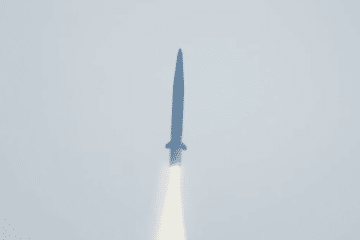On November 9 2021, Hyundai Heavy Industries (HHI) launched the ROKS Cheonan, the seventh Daegu class frigate being jointly produced by HHI and Daewoo Shipbuilding & Marine Engineering. The Daegu class, in service since 2018, was developed from the older Incheon Class to replace the aging Ulsan class frigates and Pohang class corvettes. A total of 8 vessels are planned.
The Daegu Class has a displacement of 2,800 tons, a length of 122 m, a width of 14 m, and a top speed of 30 kn. It has a 16-cell Korean Vertical Launch System and is able to deploy the K-SAAM, Hong Sang Eo anti-submarine missile, and Haeryong tactical land attack cruise missile. The Daegu class is also equipped with the Mk 45 mod. 4 naval gun system and a Phalanx Block 1B Close In Weapons System.
The biggest improvement in capabilities over the Incheon class would be the ship’s anti-submarine warfare (ASW) capabilities. Despite its relatively low displacement, ships of the class are able to operate a 10-ton helicopter. In addition to this, the Daegu Class uses a combined diesel-electric or gas (CODLOG) propulsion system. The diesel-electric transmission of the CODLOG system does not need a mechanical connection, meaning that the diesel generators can be separated from the hull. This makes the Daegu class quieter and a much more capable ASW platform than its predecessors. Finally, the Daegu class is equipped with two different types of sonar, the Hanwha Systems SQS-250K towed array sonar and SQS-240K hull-mounted sonar, further enhancing its ASW capabilities.
The ROKS Cheonan bears the name of the ship sunk by a North Korean submarine on March 26 2010. The incident took the lives of 46 South Korean sailors and injured 58 more. Survivors were invited to the launch ceremony, but declined the invitation in protest against the Korea Communications Standards Commission ruling that eight videos on YouTube which spread conspiracy theories about the ROKS Cheonan sinking were not violating Commission standards.






